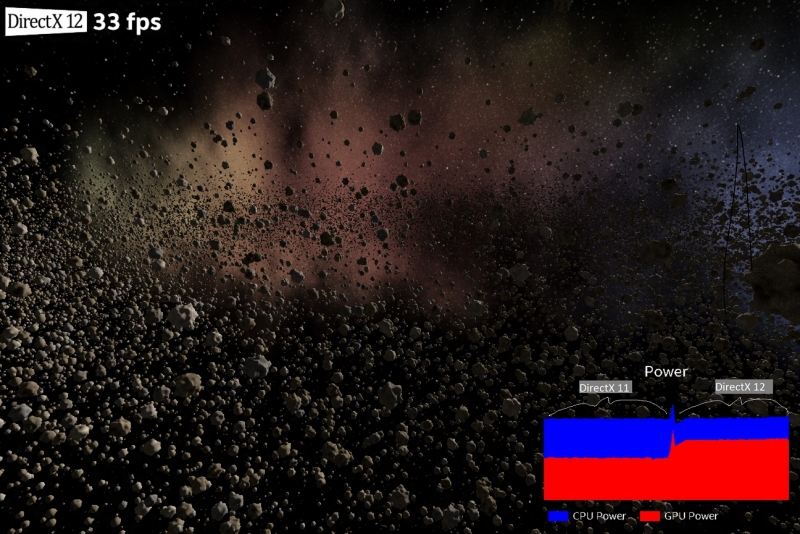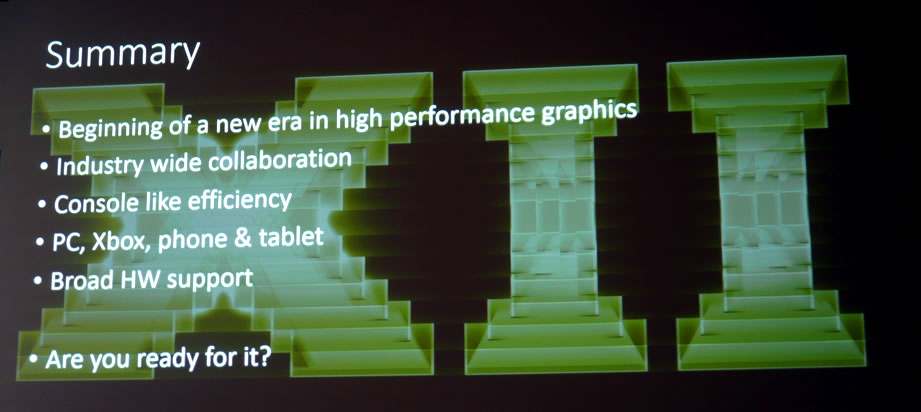At SIGGRAPH this week, Intel demonstrated the benefits of DirectX 12 for thermally constrained devices, such as tablets. While the low-level graphics API will improve performance across all systems, it's with these thermally constrained devices that DirectX 12 will be especially effective.
The reason for this is that tablets have a certain power and thermal budget that constrains both the CPU and GPU. As a game begins to tax both components, it can easily reach the budget without using the maximum raw power of either component. With these types of devices, it's a careful balancing act of giving a fair share of the pie to the CPU and GPU as necessary.
However, DirectX 12 reduces CPU utilization through a reduction in API overhead. This means that a greater amount of the thermal and power budget can be given to the GPU, improving overall performance on the device by making better use of the resources available.

Intel's demonstration featured a Microsoft Surface Pro 3 tablet, powered by an Intel 'Haswell' CPU, attempting to render a scene with 50,000 unique asteroids. In DirectX 11 mode, the scene renders at a measly 19 FPS, with the thermal budget split roughly equally between the CPU and GPU.
Switching to DirectX 12 sees the GPU consume more power at the expense of the CPU, thanks to a reduction in necessary CPU utilization. This sees the demo jump up to 33 FPS, equating to a 74% rise in performance. Essentially, if this were a game, it's gone from being unplayable to playable on a power-constrained tablet.
Andrew Lauritzen from Intel explains that power and performance are inseparably linked. "Conventional notions of 'CPU vs. GPU bound' are misleading on modern devices like the Surface Pro 3. An increase in CPU power efficiency can be used for more performance even if an application is not 'CPU bound'."
DirectX 12 will have a similar performance-improving effect on smartphones, laptops and even small form factor desktops, all of which are power or thermally constrained. Unfortunately DirectX 12 won't be ready until 2015, so there's a bit of a waiting game to play until we see the benefits first hand.
